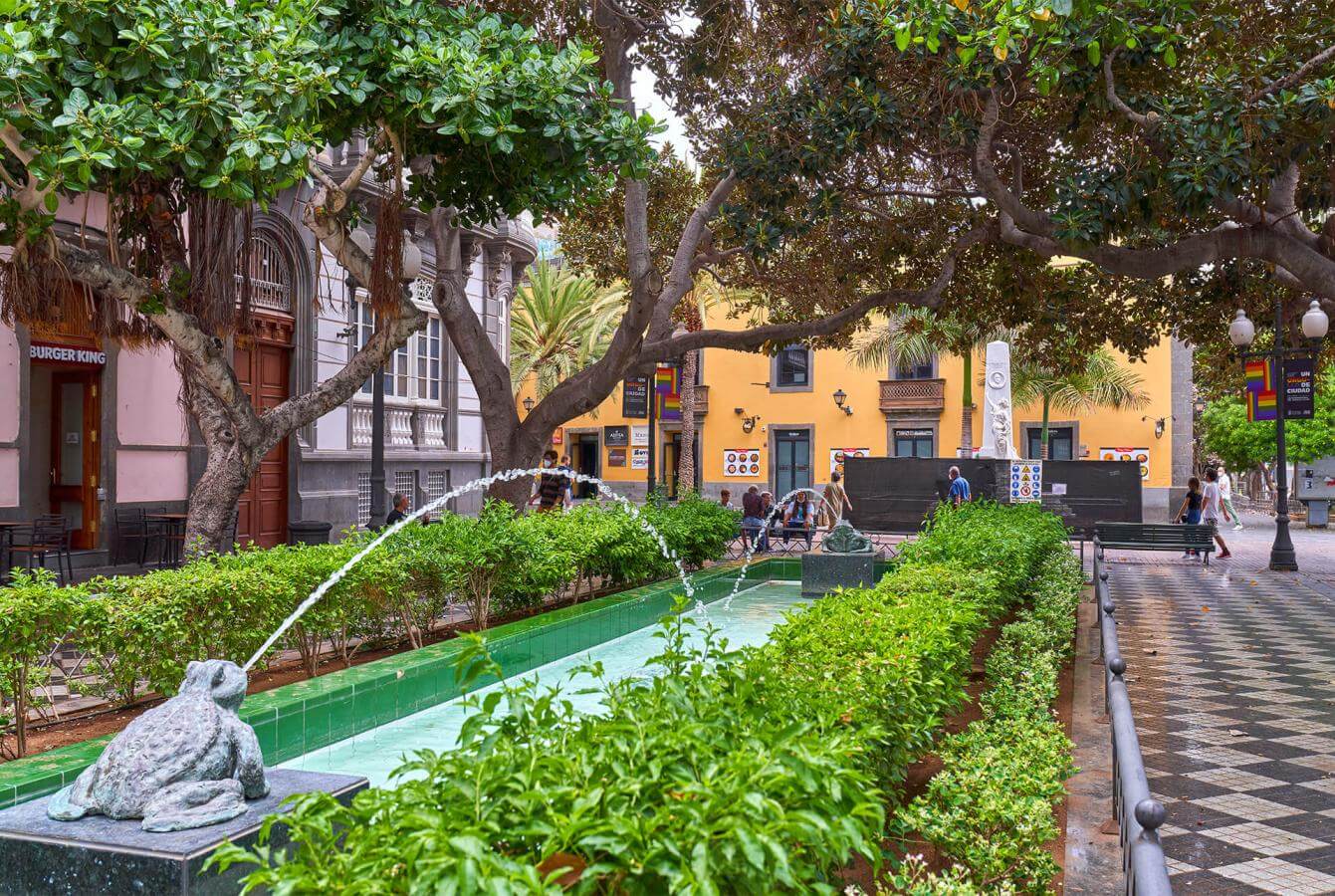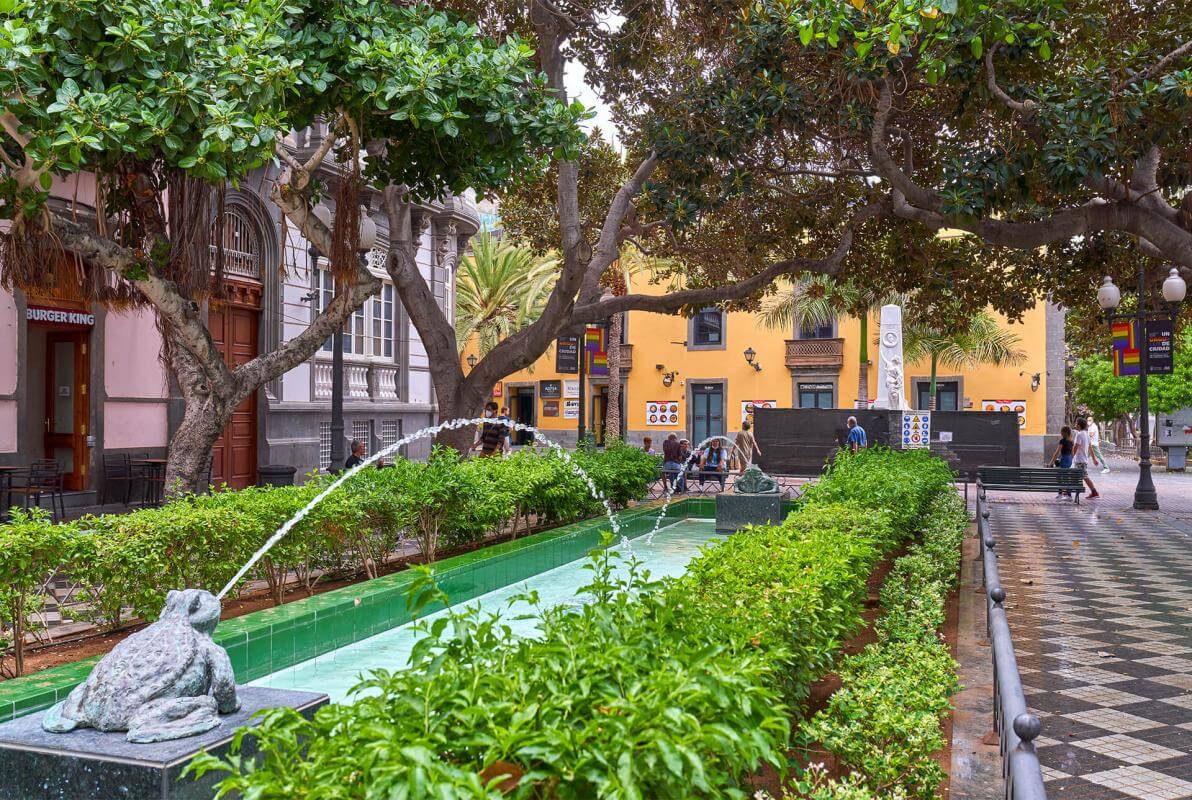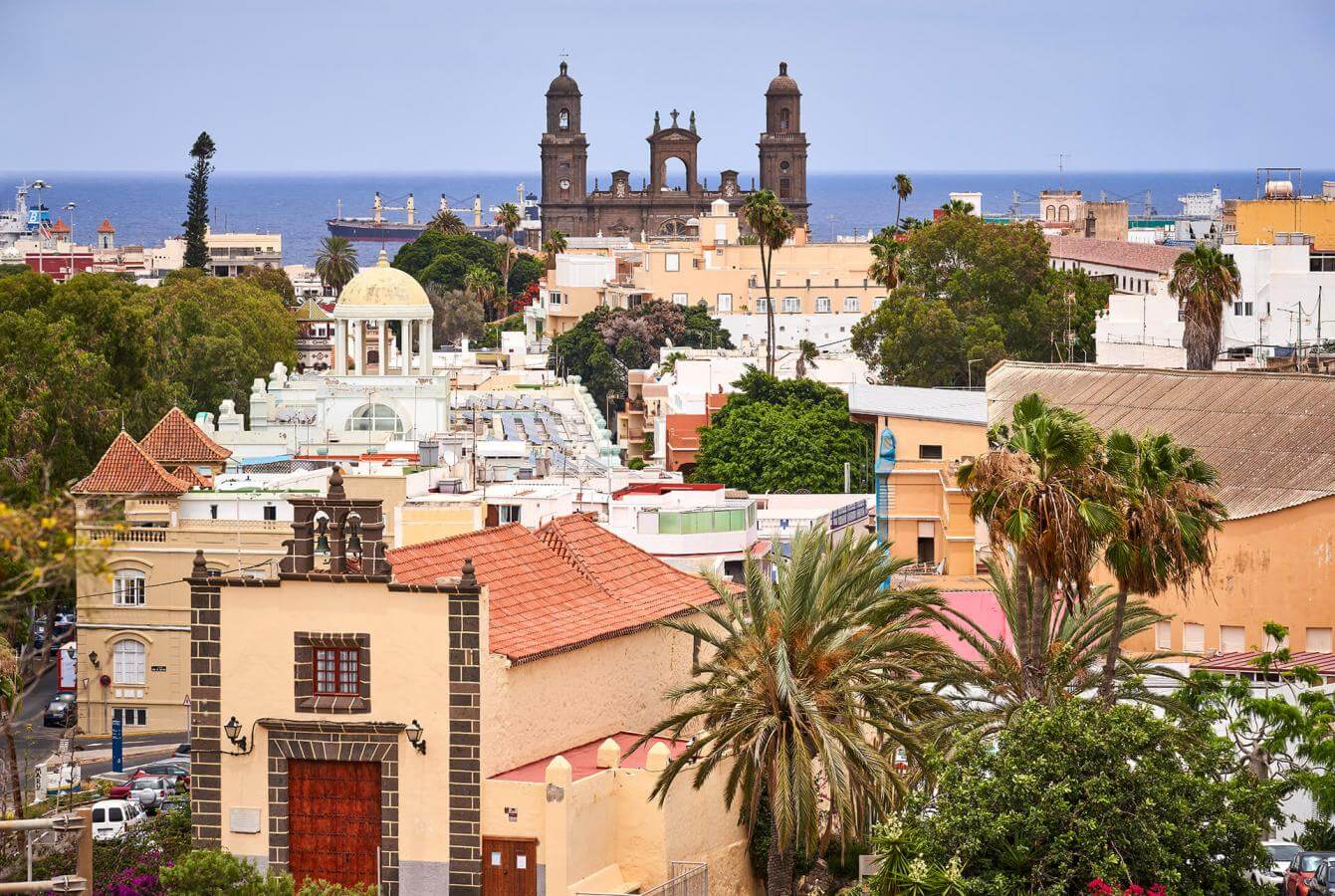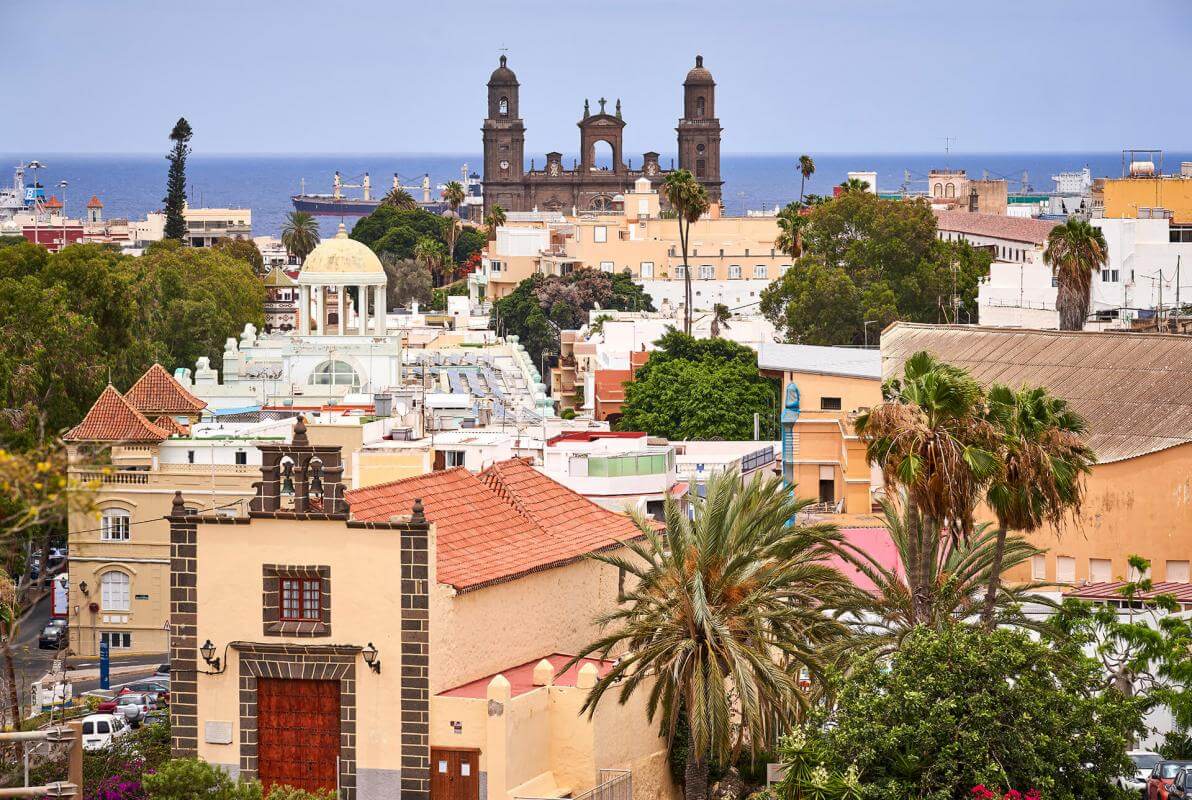Las Palmas de Gran Canaria, in the north-east of the island of Gran Canaria, is the city with the highest population in the Canaries. Here we find some of the most beautiful and popular historic quarters in the Canary Islands: Triana and Vegueta. Starting out from the port in the direction of San Telmo, you can discover Triana and Vegueta, wandering freely through their streets on a route that combines leisure, history, culture and shopping. If you prefer, you can take the tourist bus that passes the Santa
Catalina Pier every 30 minutes and stops in 12 places in the area of Pueblo Canario, Vegueta and Santa Catalina Park, amongst the places of most tourist interest in Las Palmas de Gran Canaria. Ticket prices for the 1.5-hour tour start at €18.
San Telmo: first stop after the boat
The best way to get to the historic quarter of Las Palmas de Gran Canaria when you have a few hours free is public transport or the tourist bus. You will find the entrance to the bus station close to the port, where you can get connections to take you to San Telmo in half an hour – a pleasant area surrounded by trees, with benches, a children's play area and a pretty bandstand. Its attractions include a fabulous art-deco café with multicolour tiles, where you can enjoy the open air while having a drink or a bite to eat. The little Shrine to San Telmo, in late-Baroque style, dedicated to the fishermen and sailors, is another interesting, must-see monument.
Walk around Triana: a shopping tour around the shopping district.
Triana is one of the oldest districts in Las Palmas de Gran Canaria, besides being the city's most important shopping area. Along its main street, Calle Mayor de Triana (declared a national historic monument due to its large buildings with architecture ranging from the 18th to the 20th century), you will discover a wide range of modern fashion boutiques, shops that have retained their old traditions and a large variety of cafés, bars and restaurants where you can have a drink or a snack, which altogether make Triana the most popular area for fans of shopping and leisure amongst residents and visitors alike.
Short tour amongst stately buildings: enjoy a tour through the culture of Triana
Triana also has places that are of cultural and architectural interest that you can discover as you stroll. To the south of the pedestrian street, beyond the shopping area, you will come across the Pérez Galdós Theatre – one of the most iconic buildings in Las Palmas de Gran Canaria. Plaza Hurtado de Mendoza and Plaza de Cairasco are meeting points in the area that also house some historical buildings with great architectural value: The Hotel Madrid and the Gabinete Literario in neoclassical style with modernist decor; the Pérez Galdós House-Museum – the building is a sample of domestic architecture from the end of the 18th and start of the 19th centuries.
Vegueta: a tour through the history of Las Palmas de Gran Canaria
Declared a national site of historic and artistic interest in April 1973, the Vegueta district was where Las Palmas de Gran Canaria was founded, in the north of Gran Canaria, and it is one of the areas of most interest for visitors to the city. The best way to discover Vegueta is strolling around its cobbled, pedestrian streets on a full cultural tour that you can do and enjoy on your own, admiring specimens of traditional Canary Island architecture. In Vegueta, you will find Columbus House – one of the best centres on the history of the Canaries and the Americas, the Museo Canario (Canary Island Museum) – on archaeology and the aborigines, and CAAM (Atlantic Modern Art Centre).








